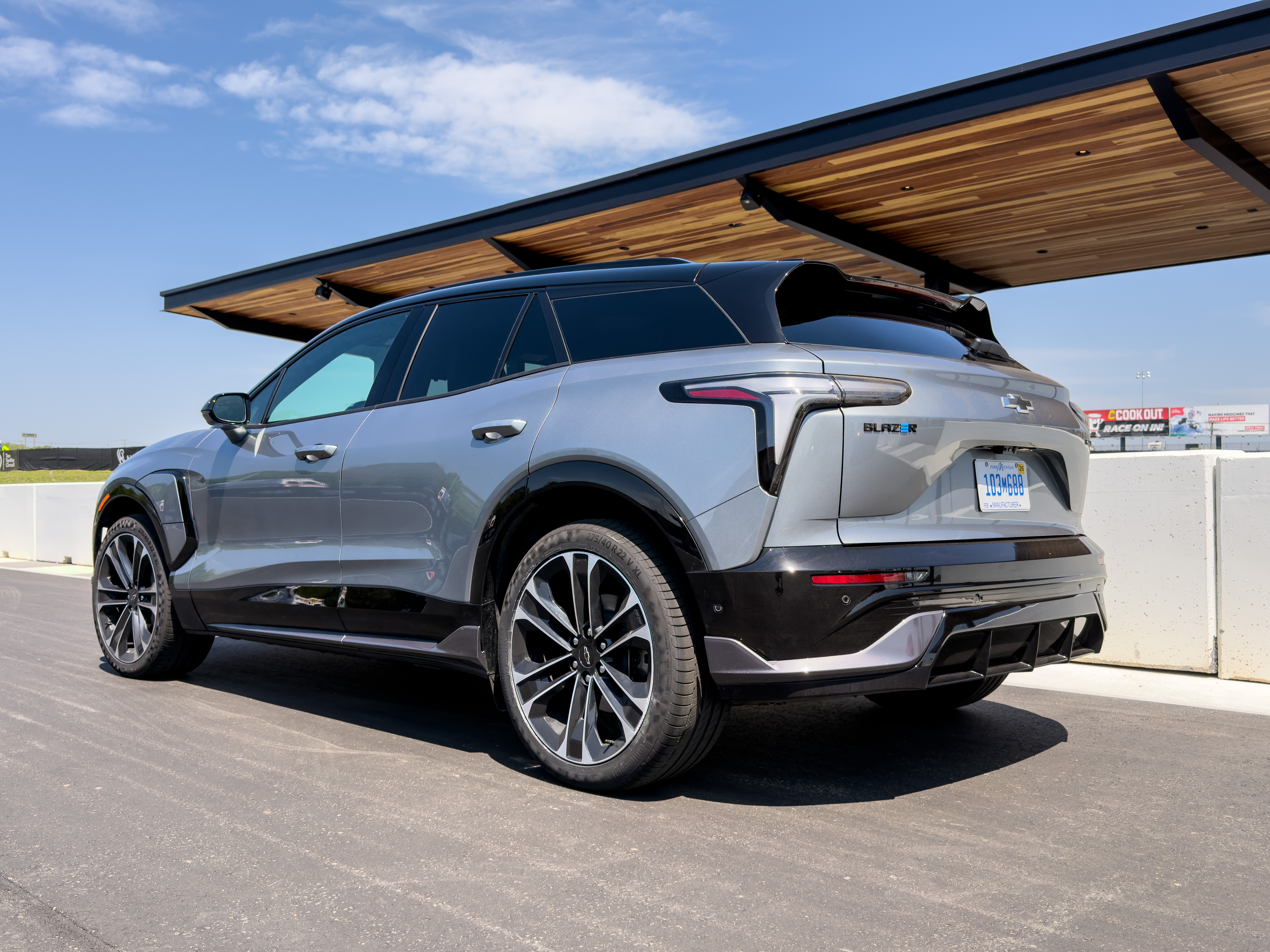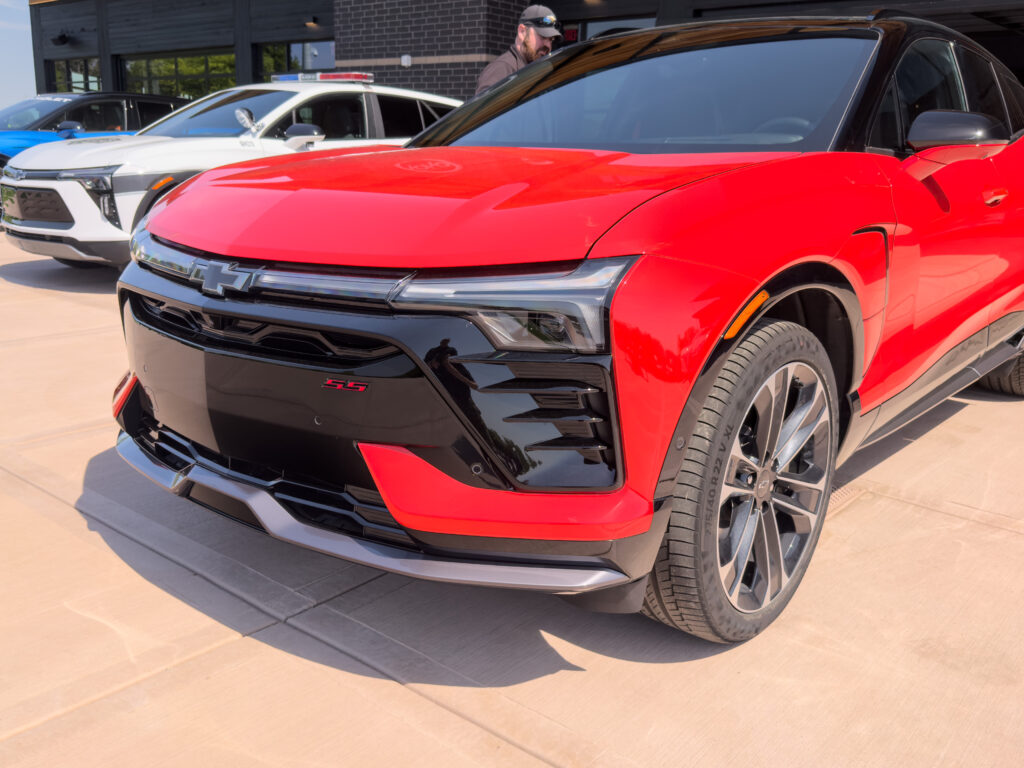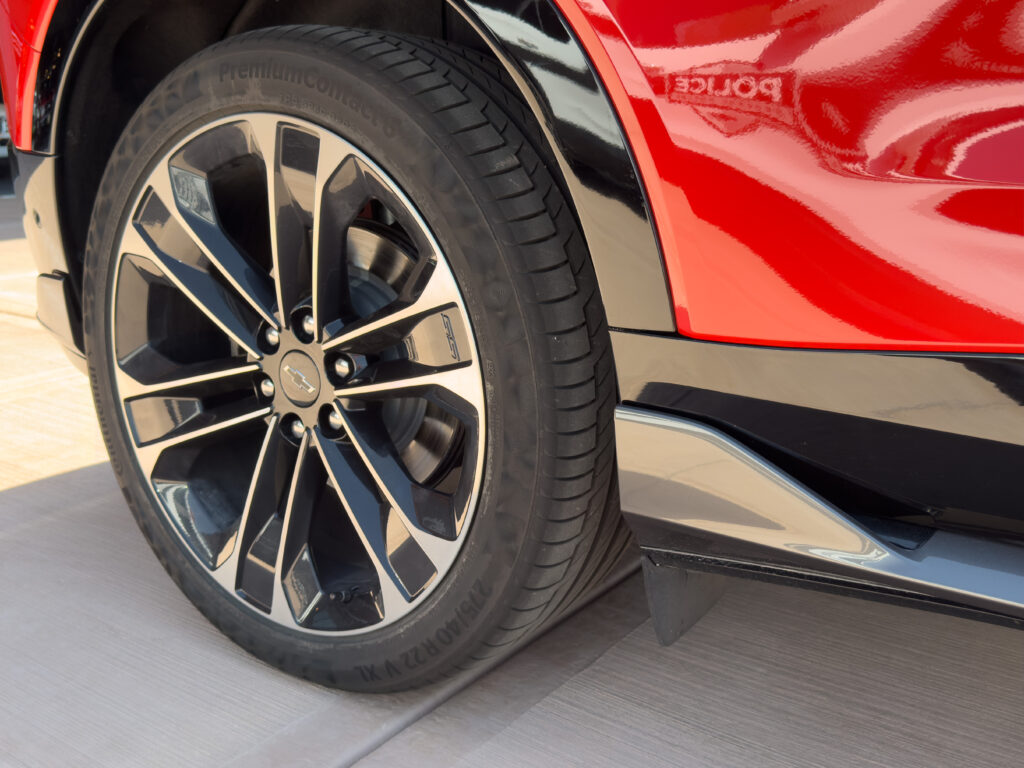CHARLOTTE, North Carolina — Before letting us loose on the freshly laid tarmac of Ten Tenths Motor Club, Chevrolet was at pains to tell us that the new Blazer SS “is not a track car.” Sure, there’s a “competitive mode” to the suite of electronic settings and the fastest 0–60 mph time of any SS-badged Chevy to date. The upgrades have been focused on making the Blazer EV “stop, go, and turn” better, and you don’t need to be driving hard to appreciate the benefits.
The Blazer EV had a rocky start. When we first drove it at the end of 2023, it felt a little unfinished, and a few days later unreliable software stranded another journalist and led to a nationwide stop-sale on the then-new EV. By last March, the software was fixed and the Blazer EV was back on sale, now cheaper than before.
Watts new?
While other Blazer EVs are available with front- or rear-wheel powertrains or with a smaller battery pack, the SS only comes with all-wheel drive and the larger 102 kWh battery pack. Nominal power output is 515 hp (384 kW) and 450 lb-ft (610 Nm), which jumps to 615 hp (458 kW) and 650 lb-ft (880 Nm) if you engage the “Wide Open Watts” mode.

Jonathan Gitlin
The styling changes for the SS trim are subtle.
Jonathan Gitlin

Jonathan Gitlin
At the front there’s a new fascia and small front spoiler.
Jonathan Gitlin

Jonathan Gitlin
There’s also a little winglet just ahead of the rear wheel.
Jonathan Gitlin
At the front there’s a new fascia and small front spoiler.
Jonathan Gitlin
There’s also a little winglet just ahead of the rear wheel.
Jonathan Gitlin
The battery chemistry is the same as lesser Blazers, but the SS makes good use of new silicon carbide inverters in the rear drive unit that minimize energy losses and segmented magnets in the motors that reduce heat buildup. There are bigger brakes, better tires, and the suspension benefits from stiffer anti-roll bars and springs, a faster steering ratio, and new monotube dampers that (together with the springs) do a far better job of controlling the Blazer’s ride than the bits fitted to the Blazer EV RS I last drove.
Oftentimes, the performance variant of an EV suffers from reduced range as a consequence of the added power and bigger wheels. But the Blazer EV SS still manages an EPA range estimate of 303 miles (488 km), significantly better than the less powerful AWD option (which uses the smaller 85 kWh battery pack). DC fast-charging maxes out at 190 kW—I’d love to give you a 10–80 percent fast-charge time, but Chevy only quotes “78 miles in 10 minutes” when it comes to charging stats.

